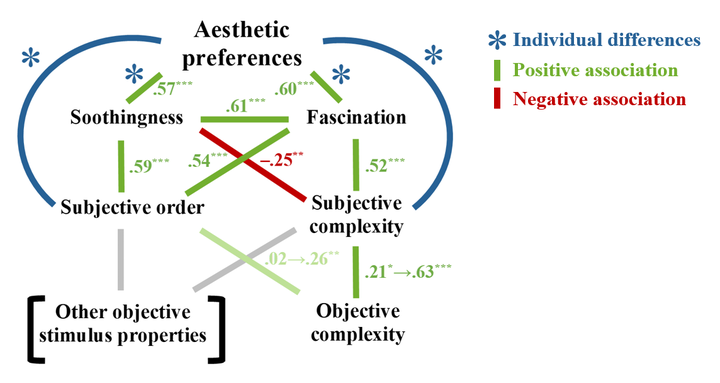Order, complexity, and aesthetic preferences for neatly organized compositions
 Figure licensed under CC BY 4.0 by Eline Van Geert & Johan Wagemans. Retrieved from https://doi.org/10.6084/m9.figshare.8038775
Figure licensed under CC BY 4.0 by Eline Van Geert & Johan Wagemans. Retrieved from https://doi.org/10.6084/m9.figshare.8038775
Abstract
Why do people like images of neatly organized compositions, collected on blogs like Things Organized Neatly©? We explored which factors might contribute to aesthetic preferences for these images of a set of objects, or parts of objects, organized in a neatly or tidy way, focusing on both stimulus and person properties related to order, complexity, and the balance between order and complexity. In a large-scale online study, 421 participants chose which of two simultaneously presented images they preferred (100 pairs) and completed some personality questionnaires. The images within each pair were selected to be very similar except for how ordered and/or complex they were on certain perceptual dimensions. In a second part of the study, 84 of these participants also rated how ordered, complex, soothing, and fascinating they found the 184 images. Images high in order and high in complexity were perceived as more fascinating, whereas images high in order but low in complexity were perceived as more soothing. Aesthetic preferences increased with increasing differences in soothingness and fascination between the two images. Subjective order and subjective complexity were both related to aesthetic appreciation, and independently so, suggesting that the balance between order and complexity involves no interaction. Participants differed in how often they preferred the more ordered, complex, soothing, and fascinating image in a pair, which could partly be attributed to age and personality. In general, stimulus and person interact in determining aesthetic appreciation, but deeper theoretical understanding of these interactions requires further investigation with more parametrically varied stimuli.
Reference:
Van Geert, E., & Wagemans, J. (2021). Order, complexity, and aesthetic preferences for neatly organized compositions. Psychology of Aesthetics, Creativity, and the Arts, 15(3), 484–504. https://doi.org/10.1037/aca0000276